Kirby and the Forgotten Land (Nintendo Switch) Review
By Michael McCann  17.04.2022
17.04.2022
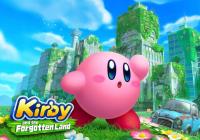
It happened again. It happens every few years without fail, like the Winter Olympics or the blooming of George Wilson's "Summer Floraganza.'' Wait, maybe scratch those. But since the release of Elden Ring, one of the year's hottest titles, the discussion about video game difficulty, and if whether the design of a more demanding experience should include and/or is compromised by also offering options to cater for the casual gamer is rife once again. It is an interesting question, and, of course, a loaded one because of what the answer may infer about the industry as a whole as well as the audience that supports it. There is one series that has never had to deal with the issues inherent with being associated with this type of discourse; in spite of, for very much the opposite reason, its primary descriptor being that it's "easy." Kirby games have always, since inception, been refreshingly chill affairs, and it's this element in particular that "appears" to be what the people "want" from the famous pink puffball. Now, with the first jump proper into the 3rd dimension in Kirby and the Forgotten Land, could this be the biggest shake up the mainline series has had yet?
The answer to the question posed in the intro? Yes, and no. While most titles will offer difficulty modes with 'Normal' being the default, Kirby and the Forgotten Land offers 'Easy,' or 'Spring-Breeze Mode' as it's charmingly called, as the default setting, and then leaves it up to you to crank it up to normal, 'Wild Mode,' for those wanting the added challenge. Just this inclusion alone, in conjunction with the additional axis, makes Kirby and the Forgotten Land possibly one of the more "hardcore" Kirby adventures to date.
The first title in the series, Kirby's Dreamland, was created to be an accessible entry point for newer and younger players, specifically in reference to Kirby's float ability which allows the character to cheese past difficult obstacles and challenges. Yet across the many sequels and appearances over the years, not to mention the maturation of those once unaccustomed players, Kirby has had to walk a fine line of that which is to satisfy a wider audience, one that is comprised also of more seasoned pros on the other side of the line, of whom still crave the chill time but without it totally lapsing into the pedestrian. On this point Kirby and the Forgotten Land is an exhibition in absolutely masterful game design, hitting this difficult balance just right. Even in Wild Mode it's not at all hard to get through the stages but, even still, some moments and bosses, and in particular, the secondary challenge stages in the latter half of the adventure may still surprise some long-time fans. Thankfully, and in spite of this, Kirby never completely jumps ship or forgets what it's really about.
The shift to 3D here feels rather natural, like it's something that has always been. Freed up by the extra dimension Kirby is able to go back to basics, mechanically speaking, while still feeling like a fresh experience overall. Rather than the new 3D perspective creating an expansive Super Mario Odyssey-like open-sandbox, like what audiences speculated after the initial announcement trailer, Kirby and the Forgotten Land's worlds are a much tighter, linear and directed affair, more akin to Super Mario 3D Land or Super Mario 3D World, utilising a fixed overhead camera view for most of the action. The camera can be panned ever so slightly with the right control stick but this feature is largely redundant in action. It's easy to take for granted how well this new perspective fits with Kirby's mainline legacy playstyle.
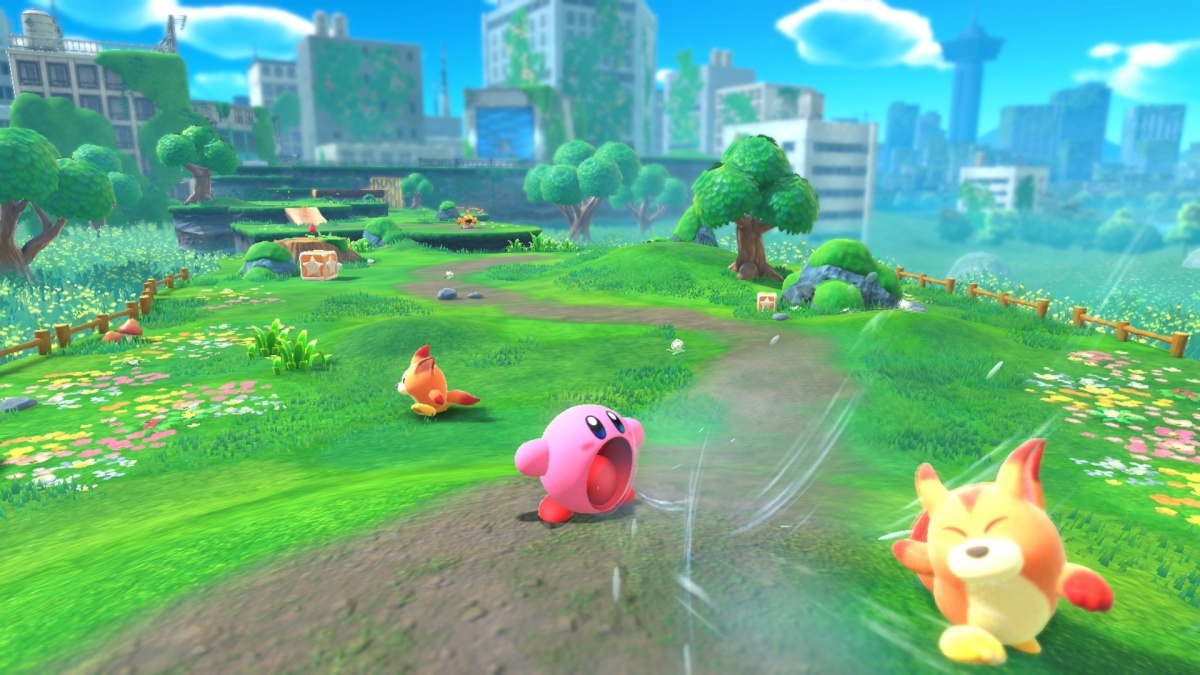
It feels like the perfect modern translation of Kirby's Adventure, to take as an example, feeling like something that might have taken years and many iterations to hone and arrive at, contrary to that not actually being the case, at least not looking at it from the outside. Movement does feel a little slow initially but once the rhythm of Kirby's movements and actions in 3D are gotten used to it presents exactly consistent with that of the puffball's 2D outings. Some alterations have been made, of course. Notably a nerfing of Kirby's aforementioned float ability - as this ability has been limited just enough so to not break stage design, however it still retains the usefulness of being able to get Kirby out of a scrape or to correct a platforming error.
One change that doesn't quite work as well in this entry is the auto-swallow function that activates Kirby's staple copy abilities automatically. It's easy to see why this decision was made, and there's most likely good justification for it, for it to not overcomplicate the controls to the less seasoned that are still getting their bearings on the added complexity of 3D. Rightly or wrongly though, it does come off as an over-simplification, and it denies the fun and very light strategy involved in making that decision for oneself. It comes as a huge relief to see that there is an option available in the menu to toggle this off and it's highly recommended to do this for Kirby and the Forgotten Land unless it really is too much of a struggle to manage.
Even by just introducing the risk of losing a copy ability due to mistake goes a long way toward making the moment-to-moment far more engaging. Shout out to unnecessary button commands too, as a press on the D-pad will make Kirby emote, resulting in consistently charming animation. Animation which, by the way, is, across the board, sterling throughout. As is seemingly a result of an internal memo to Nintendo's development teams (rightfully so, too), Kirby can have one local co-op partner join in the adventure. This is also an appreciated feature but it behaves similarly to controlling Miles "Tails" Prower in Sonic 2, defined as a big brother or big sister implementation, whereby Player 2 controls Bandana Waddle Dee with severely paired down move-set and abilities, removing all agency and firmly positioning the character as second fiddle.
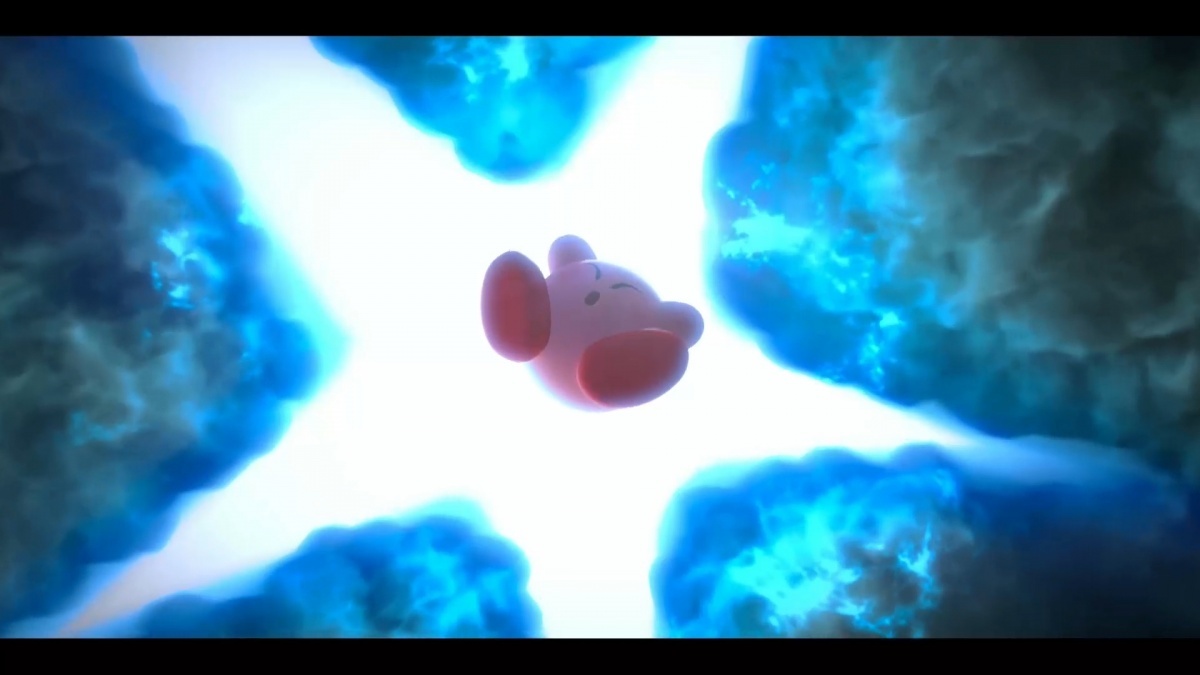
Other than these changes to the mainline formula Kirby and the Forgotten Land ultimately follows a rather straightforward and well-worn path for a 3D platformer. Use the Warp Star to traverse between level to level and land to land on the overworld map, rescue Waddle Dees, the primary collectable in those levels, use the accumulated Waddle Dee to open up new stages to progress. There are so many Waddle Dees as well! Cut this open and it will bleed Waddle Dee. This is notwithstanding as criticism though as it really is the main levels, their pacing and the ideas that are packed into them, that are the star of the show and negate any inclination of fixing what was never broken in the first place in exchange for a good time.
Kirby and the other inhabitants of Planet Popstar unexpectedly get sucked into an unexplained space-time fractal tear thing that appears in the sky overhead for no other reason but perhaps the excuse to place Kirby in a post-apocalyptic destroyed earth-type setting. Kirby is assisted by Elfilin, a new character from this portal universe, who initially appears as a fairly redundant inclusion beyond being "cute" before their true relevance is made clear by the story progress. Together they work toward the goal of saving the kidnapped Waddle Dee and returning them back home safely. From here Kirby will visit the typical world themes of fire, ice, water, etc, albeit from the aspect of an abandoned shopping mall, derelict factory or flooded theme park and it's a successful melding, differentiating itself from other titles in the series. There's even an element to the setting, with there being something slightly perverse and self-aware about the edge that's afforded by the tension of putting cutesy characters in a world where it's suggested that civilisation, one much like our own, has all but collapsed and extinct.
The stages are so tightly thought out and directed that they don't have an ounce of wasted fat on them. For the most part, they look spectacular with some really great lighting effects and art direction which elevates the presentation beyond what most would expect for this type of game. It also contains one of the best ice textures ever reproduced in a videogame. The only real blemish in regards to presentation is that of the frame-dropping that occurs on distant-from-the-action animation. It's hard to say if this is a hangover from a stop-motion style, something which would be a direction easy to imagine this Kirby title would go in during development, or more likely it's a technical or optimisation concession in order for the game to run smoothly. It is kind of a "biggy," and hugely distracting as the distance threshold for this detail drop is absurdly shallow. Hopefully this is something that can be patched out at a later date but it is also largely forgiven on the basis of not being critical to the gameplay and the rest of the product being of such a high standard.
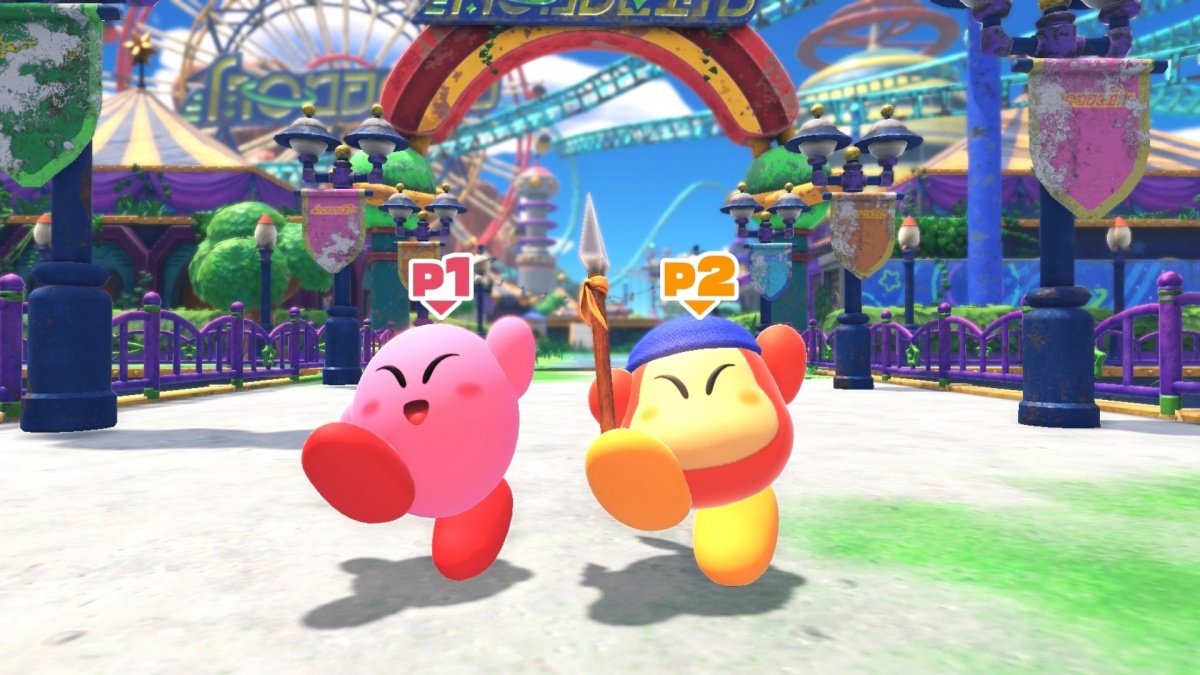
The other big banner feature to write home about is Mouthful Mode. Ever since Kirby's Adventure, Kirby has had the ability to swallow enemies and then take on their traits and characteristics. This is indeed present in Kirby and the Forgotten Land and is always a satisfyingly video-gamey mechanic. For example, it might enable Kirby to utilise bombs to attack enemies or open up previously blocked paths. With Mouthful Mode this ability is expanded on further, as is Kirby's epidermis when attempting to swallow one of the feature objects that appear in stages and are too large to fully ingest. In these instances Kirby sort of half-becomes the object, and even though the function of these abilities could just as easily be served by standard copy abilities they never fail to entertain and delight. Kirby can get a mouthful of car and become Carby or swallow a vending machine and shoot carbonated drink cans from its dispensing slot. It's always something quite mundane, but is a joy to see re-contextualised.
Hal Laboratory is the master of introducing a new mechanic and then squeezing every bit of potential out from it but also without ever overdoing it. This really applies to Mouthful Mode, bringing an added variety to levels which is also present in the overall package. Kirby has always been at its best when offering a lot of gameplay variety, and this most certainly applies to Kirby and the Forgotten Land. Waddle Dee Town acts as a home base that develops as progress is made through the adventure. Kirby can take a break here to enjoy additional mini-games, check in on world gameplay stats, and also upgrade the standard copy abilities. The unlock rate for these upgrades keeps this ticking along at a great pace, and although they often feel more cosmetic than tangible they can inspire many-an allegiance shift between favourite copy abilities; of which is impossible not to have.
The complete package works towards a crescendo, with a sense that every level is better than the last, also featuring one of the legit, best climaxes of the year. It'll take experienced players around 10 hours to arrive at this climax, which might not sound particularly lengthy but it's honestly a relief as opposed to many of the bloated titles that have been released in recent memory. Supplement to this there is a robust post-game, which disappointingly does reuse content from the main game, however it's also supported by the many unlockable trophies, secret side challenges in levels to find, and Treasure Road top scores to best.
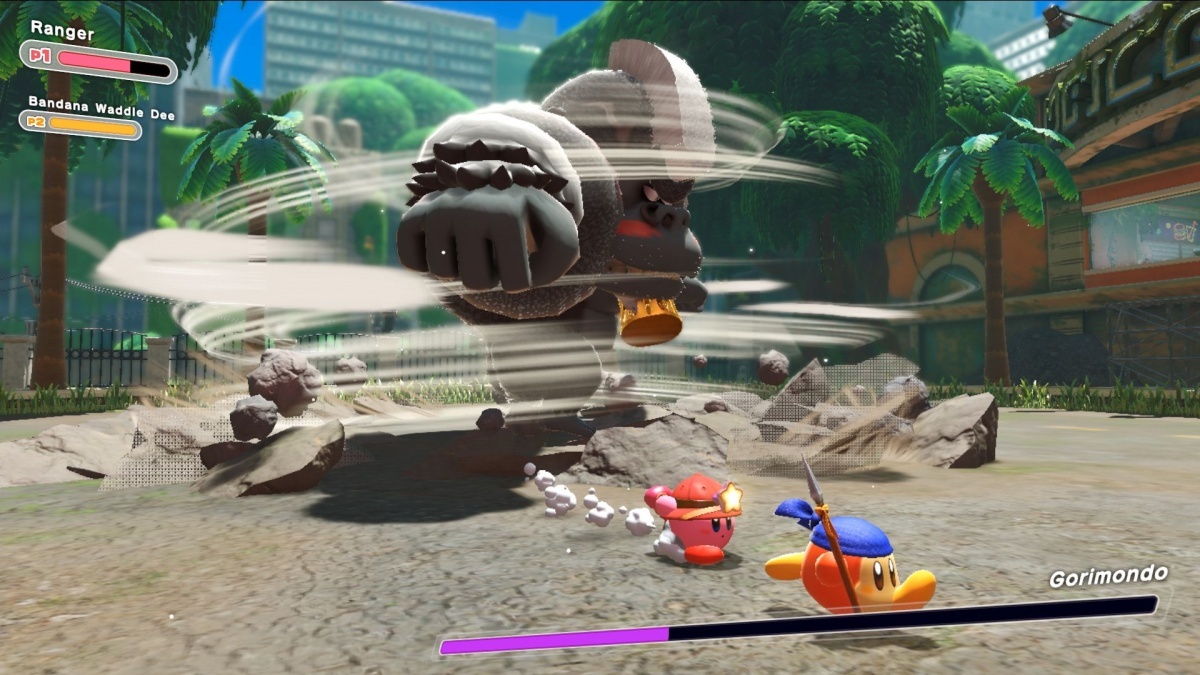
Cubed3 Rating
Exceptional - Gold Award
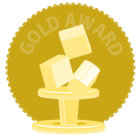
Hal Laboratory and Nintendo smashed it out of the park with Kirby and the Forgotten Land, adding yet another gem to the already stacked Switch library. No, it's not the most challenging or taxing gameplay experience going, but that's not what one should expect from Kirby either. Perhaps it could be described as the perfect palate cleanser or antidote to those more difficult experiences - and more importantly, unlike those titles, doesn't require as many caveats to its recommendation. For those who enjoy their character designs round, this will likely appease, but at the end of the day, it's just… fun!

![]() 9/10
9/10
![]() 0
(0 Votes)
0
(0 Votes)
 Out now
Out now  Out now
Out now  Out now
Out now  Out now
Out now Comments
Comments are currently disabled

 Sign In
Sign In Game Details
Game Details Subscribe to this topic
Subscribe to this topic Features
Features





 Top
Top

